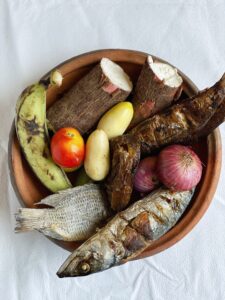Bibiana
February 29, 2024
Lifestyle

Bibiana
February 29, 2024
Lifestyle
As an Asante born and bred, who has lived my whole life in Kumasi; the capital of the Ashanti region, I have seen many ways that food is made here.
Some are more traditional, others are modern and the rest are a mix of both. I took a traditional Asante cooking class recently, and here are a few things that stood out to me. These are also things I’ve seen my mom who has been a cook for 30 years do a lot in her cooking.
In my experience, Asante cooking techniques are very simple. It uses very simple but flavourful ingredients to achieve the right taste and aroma.


What are some Asante cooking techniques that stand out to you?
You can find more on my instagram page.
Copyright © 2023 Cheflifestyle by Teabag Creations. All rights reserved.